Ready to make your home a safe and exciting space for your new kitten? Discover 13 practical tips to kitten-proof your home. From understanding the unique challenges of a kitten's curiosity to creating a danger-free environment for them, this article is your ultimate guide.
Dive in to learn, but remember, the final tip might just be the one that secures your home for your adventurous kitten. We'll bring you proven strategies and heartwarming stories from our community of cat lovers. It's time to make your kitten's safety a priority. Are you ready to embark on this journey?
Crafting the Ideal Haven for Our Young Kitties
Bringing a new cat or kitten into your life is a thrilling and momentous occasion, but it also means dealing with a whole new set of responsibilities. From setting up feeding schedules to choosing the perfect toys and arranging for a litter box, there's a lot on your plate.
This guide will focus on one crucial aspect of pet parenting - ensuring your home is a danger-free zone for your curious new kitten.
Contrary to what you might initially think, this isn't about safeguarding your home from your kitten's natural antics, but rather about shielding your kitten from potential hazards lurking in your home.
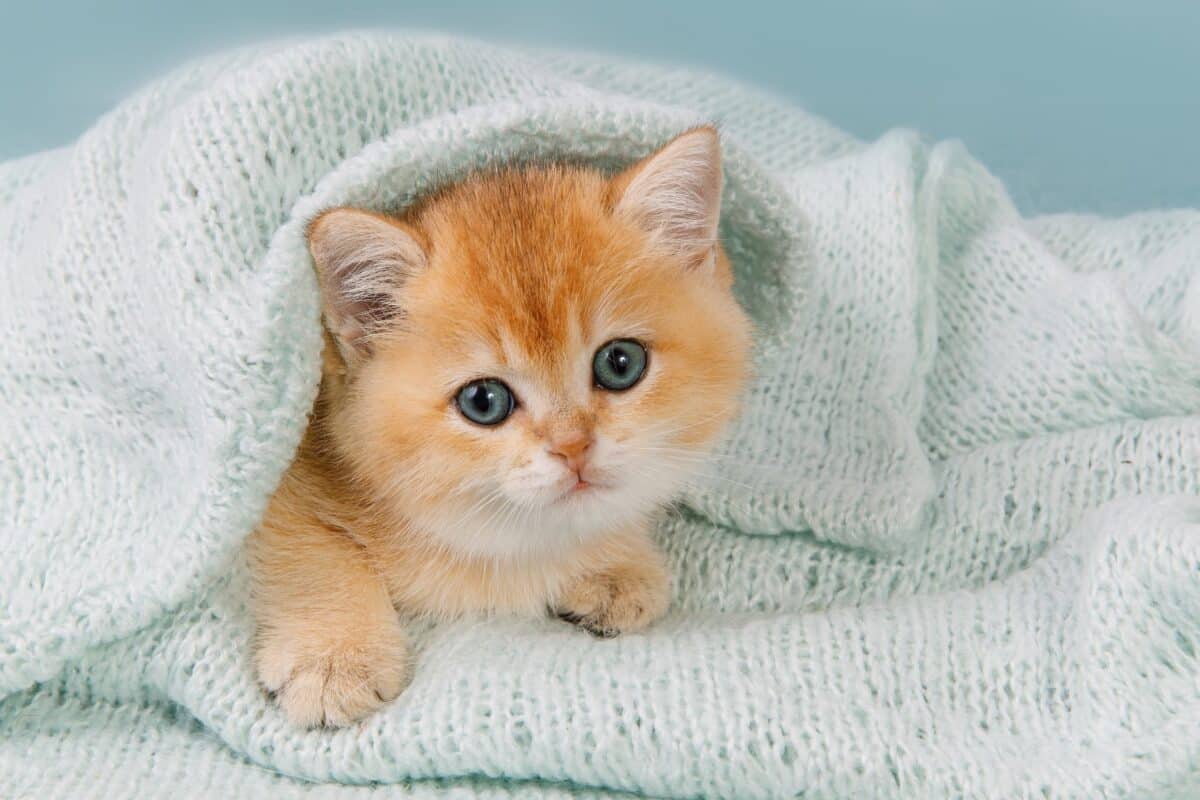
Why is kitten-proofing important?
Cats are curious by nature and tend to explore. That's why you should cat-proof your home when adopting a cat of any age. However, kittens do pose a special challenge in the safety department.
If you're adopting a kitten, consider the following implications.
Kittens are very energetic
An adult cat is likely to spend at least some of his waking hours - and sometimes all of them - just resting and contemplating the meaning of life.
On the other hand, Kittens seem to always be on the move. If they're not sleeping, eating or pooping, they are out there exploring their environment and interacting with it.
Kittens are less experienced
Older cats usually know how to avoid certain risks. Life experience has taught them the limits of their jumping - and falling - abilities. They can anticipate the results of certain actions better than a kitten will.
That puts kittens at greater risk for accidents, as they can't figure out what will happen if they push and pull on things around them or miscalculate a leap.
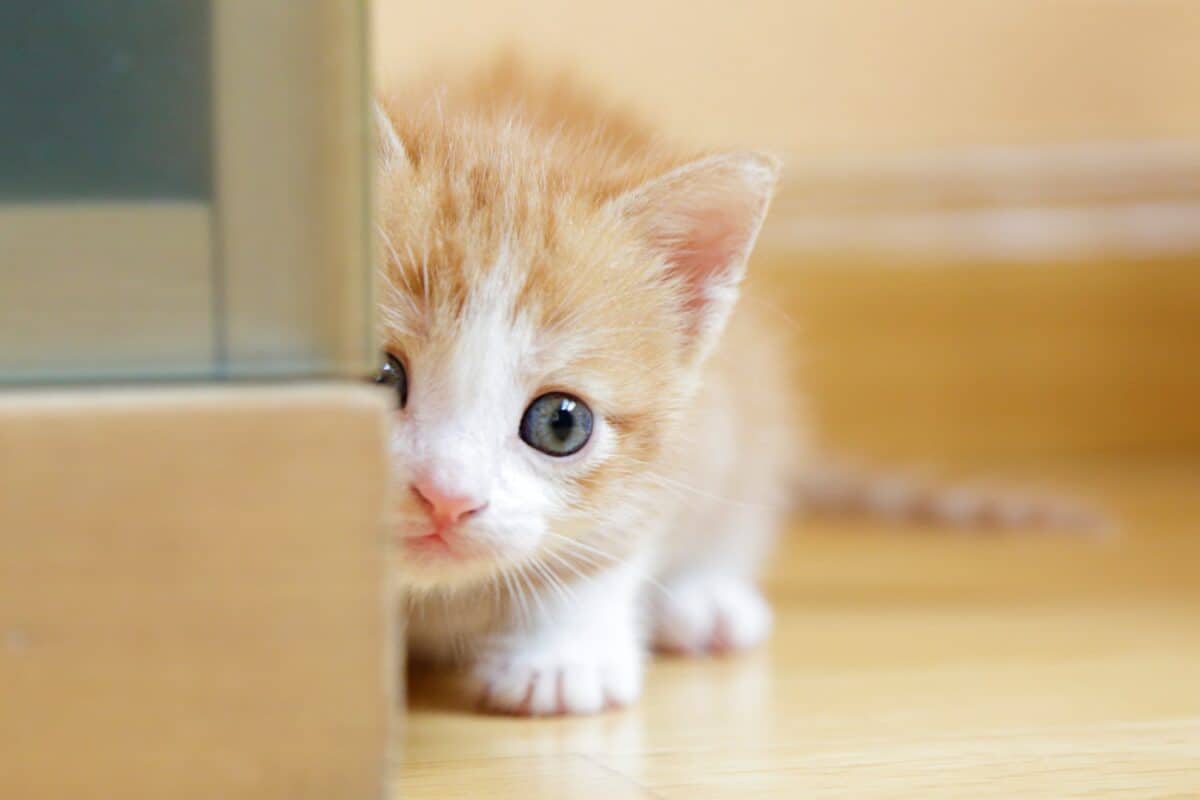
Kittens are more fragile
As they collide with objects around them, the small size of kittens can matter. A heavy object that falls on a kitten can cause severe injury, whereas a large cat may make it through the same collision unharmed.
Keep these factors in mind as we go over the kitten-proofing tips.
Kitten Proofing Tip #1: Take a good look around - from a kitten's perspective
Go through your home room by room and take a good look around. Carry paper and pen with you and take notes as you go along.
In each and every room, get down on your hands and knees and check the room from a kitten's point of view.
There may be places to hide and things to chew on that are visible only from that perspective. Kittens love crawling into small spaces as they explore, and the entry points may be low to the ground and hidden by furniture.
Now's your chance to find them ahead of time.
Gauge the size of any hole you see and remember - if a kitten can fit its little head into a space, it will be able to fit its entire body.
At the same time, keep in mind cats jump high. If you're adopting a tiny orphaned 2-week-old kitten, you may not think they can get high up.
Give it two to three weeks; that tiny little creature may surprise you. Don't take any risks and aim your kitten-proofing high and low.
Kitten Proofing Tip #2: Lock up anything that's toxic to cats
Lock away your cleaning supplies, medications, and anything else which may be toxic to felines.
Use child-proof latches and locks (Amazon link) to secure hazardous materials away from tiny inquisitive paws and noses.
Kitten Proofing Tip #3: Inspect your plants
If you're unsure whether a plant is toxic to cats, get rid of that plant. That's just basic risk management when kitten-proofing your home.
Be extra careful with lilies. Some types of lilies are very toxic to cats, to the point that ingesting a tiny fleck of pollen can kill a cat unless immediate veterinary care is provided.
For a curious kitten, a plant can be irresistibly attractive.
Unfortunately, many plants are toxic to cats. Check out the list of plants that are toxic to pets and make sure your home is free of them all.
If you're adopting a kitten, it's wise to educate your friends and family about the risk of lilies and let them know they should never include any lilies in any flower arrangement they might send to your home.
Read more about cats and lilies here.
And while on the topic of house plants, some cats consider plant pots to be a great sandbox to play in or possibly even use as their litter box.
This isn't a safety issue per se, but if you want to keep your non-toxic potted plants, consider kitten-proofing them, too by placing large decorative pebbles on top of the soil.
Kitten Proofing Tip #4: Secure heavy objects
Pay special attention to heavy objects that can be knocked over when kitten-proofing your home. Some cats love pushing things off a shelf just to watch them crash on the floor.
While it can be very annoying when your cat shatters your porcelain knick-knacks or glass trinkets, it's usually not very dangerous for the cat himself. However, where kittens are concerned, things can get complicated.
Kittens love pushing and pulling on things, and they can end up with a heavy object landing on top of them - or on one of their siblings - causing injury. If an object can't be safely secured in place, remove it altogether.
My heart still goes cold when I remember the time I heard a crash and saw a little white kitten paw sticking out from under a large picture frame that had been knocked over from where I had left propped against a wall. It took me about an hour to stop shaking and crying from the fright of it, Radar used up one of his 9 lives that day, and it was my fault for leaving it there. He was fine but it could have been so horrible. I also heard of someone who lost a siamese kitten when a propped up kitchen chopping block fell on it.
Shared by TheCatSite member epona
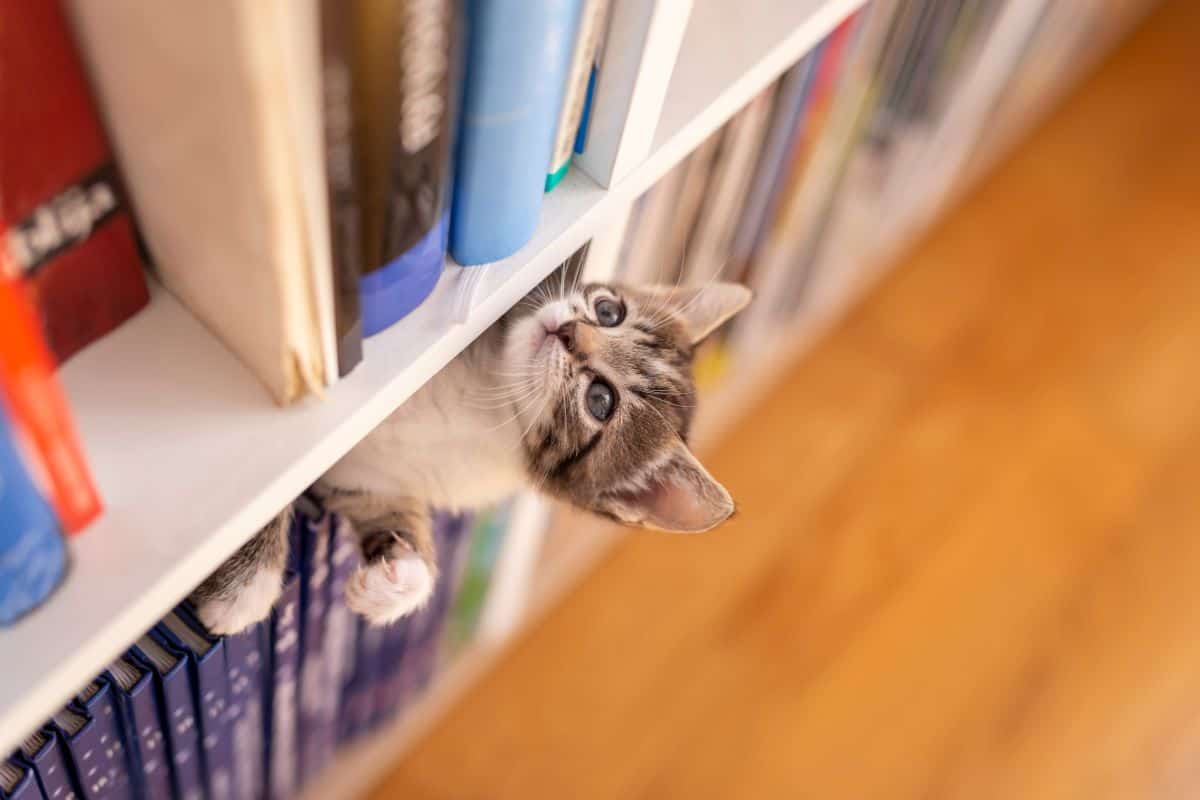
SIGN UP FOR THECATSITE'S EMAIL UPDATES >
Kitten Proofing Tip #5: Secure doors and windows.
One of the most dangerous things that can happen to your kitten is getting outside unattended. A cat can get lost at any age if let out into unfamiliar surroundings.
Kittens are at greater risk because they are so fragile. Even a small dog or a road can be a lethal threat to a lost kitten. That's why kitten-proofing your home simply must include your doors and any other way a cat may get outside unsupervised.
Keep doors locked when not in use to reduce the risk. If you have a screen door, make sure it's latched securely.
Check your windows for any openings that are the size of a kitten's head or larger. If they're there, add a layer of net or even chicken wire to that window.
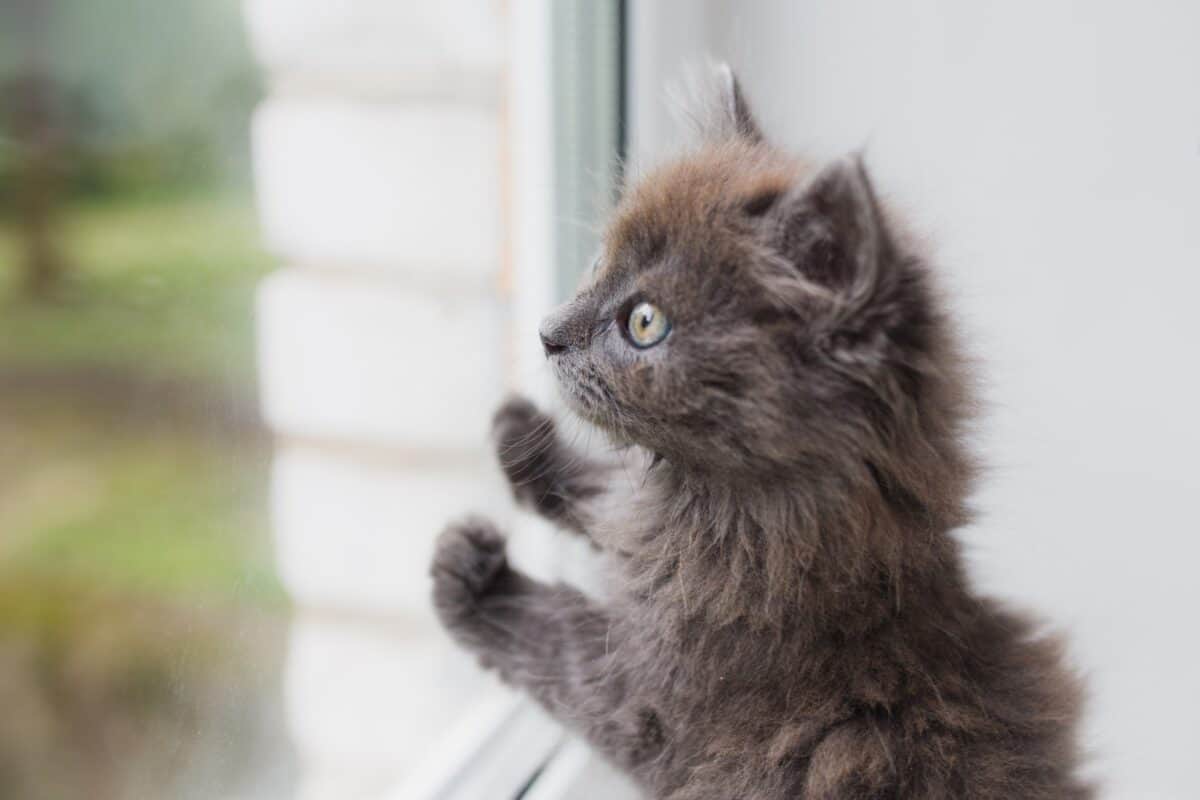
Kitten Proofing Tip #6: Prevent a high fall
Cats may always land on their feet but a fall from a significant height can put your kitten's life at risk.
Part of kitten-proofing your home involves finding these danger spots and blocking the kitten's access to them.
We already discussed windows, but don't forget to address balconies too. Never allow a cat out on a balcony unless it's fully covered in netting. Don't count on the kitten's inability to jump on the handrail. It may be a matter of a few weeks or even a few days before your kitten is agile enough to make the jump.
Read our member's story from this thread about cats and balconies and add any balcony that you have to your kitten-proofing list:
Does Anyone Let Their Cat On Their Balcony?
One of the most frightening moments of my life was catching a glimpse of something sitting on the handrail of my fourteenth floor balcony, thinking it was a bird, and then realizing it was Thirteen, my female tuxedo cat. My heart absolutely jumped into my mouth. Fortunately I had the foresight not to scare her. Once I opened the door to the balcony all the way she looked over at me and then jumped down and ran into the house. My daughter, who is not allowed on the balcony unsupervised, had left the door open! Needless to say, after that the balcony doors became permanently locked and no one other than an adult can open them.
Quote by TheCatSite member LavishSqualor
Don't forget to address heights within your home. If you have stair railings separating your first and second floors, you should block the kitten's access to that area.
Read more about kitten-proofing the banisters in this thread:
Kitten-proofing stair railings
Kitten Proofing Tip #7: Keep your kitten away from hot surfaces
Serious burns can happen in seconds and put a kitten's life in mortal danger.
As you make your initial kitten-proofing scan of your home, mark any potentially hot surfaces that a kitten can get too close to and deal with them one by one.
- If you have an open fire source, set up rules for using them only when the kitten is locked out of that room.
- Never leave a hot stove unattended.
- Never leave the oven door open any longer than is necessary to remove a baked item.
- Open both oven and broiler doors and inspect the inside before you turn on the oven. A quick once-over will protect your kitten from a family member's carelessness or a neighbor's child's mischief.
Kitten Proofing Tip #8: Make sure all appliances are closed at all times.
Make a habit of keeping all home appliances - washer, dryer, and dishwasher - closed at all times.
If possible, keep the door to the laundry room closed as well as another layer of protection. Place a note on the washer and dryer, instructing everyone in your household to keep them shut. Don't count on that, though. Always check before operating any appliance. That's a habit that could save your kitten's life.
Kitten Proofing Tip #9: Keep toilet seats down
In fact, if possible, keep the door to the bathroom closed too. Kittens can fall into a toilet bowl and drown when they become too exhausted trying to get out.
Even if they manage to get out, getting drenched in toilet water is unhygienic and, let's face it, just pretty disgusting.
In short, add keeping kittens safe from toilets to your kitten-proofing list.
Kitten proofing Tip #10: Get cords and strings of any kind out of the kitten's way
Kittens love playing with cords and strings but these can be very dangerous for them.
Let's start with the obvious problem of electric cords. Many kittens love to chew on things and clearly, chewing on electric cables and cords is not a good idea.
Your first order of the day when kitten-proofing your home would be to locate menacing electric cords and put them into a cord container.
As an added layer of safety, get used to unplugging electric appliances when they're not in use.
Curtain cords are another source of danger to your kitten for two different reasons. First, a rambunctious kitten can jump on a curtain cord and bring down the entire curtain- including the curtain rod - injuring himself or others. In addition to that, when chewing on the cord, the cat can strangle himself or swallow a piece of cord.
Finally, toys with strings and ribbons. Your kitten may adore them, and it's perfectly ok for you to use them during play sessions.
However, stick to supervised playtime only and never leave a kitten unattended with strings or ribbons - even if they're part of a cat toy.
A kitten is able to actually hang themselves or wrap it around his neck so tightly it can be dangerous.
Here's a story one of our members shared that illustrated the point.
I once had this thing that hung from the top of a doorway, with a long elastic string and a toy attached at the end, the toy hung down about 2 feet off the ground. While I was very close by doing whatever, Tootie, a teenager kitten was playing with this hanging toy. I had my back to her for maybe a minute, likely even less, and that fast, while playing with that toy rolling around with it, the elastic string got wound around her and her neck, and I mean tight. She was freaking out - I was only steps away but in seconds she was literally choking out.
Shared by TheCatSite member CatWoman707
Kitten Proofing Tip #11: Undress the tables
As your kitten grows, climbing on things becomes a favorite pastime. Jumping directly on top of the table may be too difficult, so why not use the edge of the tablecloth as a ladder?
If you have a flower vase or other decorative element on top of a runner or tablecloth, they will crash down as the kitten hangs onto the cloth and pulls everything down to the floor.
And a heavy vase can cause severe injury. Kitten proofing comes into play here - simply remove all table covers for a few weeks until your little energetic furball can jump on a table without needing a makeshift ladder.
Kitten Proofing Tip #12: Keep office supplies put away, including used ones
While any kitten would love to play with a bouncy rubber band, the results can be tragic.
Your kitten can strangle on a band or swallow it. Your office space is also home to sharp objects such as tacks and staples which you should keep away from prying paws.
Keep all office and crafts supplies out of reach. That means used items as well, so get covered wastepaper baskets.
The most important tip at #13: Supervise your kitten!
Closely supervise your kitten for the first few days, because even if you've invested a lot of time kitten-proofing, the little rascal will find something you've missed or a space you thought they couldn't get into.
Follow your kitten around as it explores, and you will likely spot a few more hazards.
Setting up a sanctuary room is the way to do this without overwhelming yourself or the kitten. Take extra care to kitten-proof one room in your home.
Follow your kitten there for a few hours, and once you're happy with his safety, you can leave Kitty there unsupervised.
It's easier to kitten-proof one room at first and let the kitten out to explore only when you can follow him around to make sure he's not getting into trouble.
When can you finally relax and let the kitten roam the home unsupervised?
There really isn't a set time when you should let your new kitten become fully free roaming. It just depends on how well you kitten-proofed your home and how mischievous that specific kitten is.
Waiting until the kitten is at least 12 weeks old is a good minimal baseline. Before that, a kitten may simply be too fragile to get around unsupervised.
Our members offer even more tips in this thread.
Do you have more ideas on how to kitten-proof a home? Please do leave a comment to share them. And don't forget to share this article with your friends as well, to help secure the lives and well-being of kittens everywhere.
SIGN UP FOR THECATSITE'S EMAIL UPDATES >
Read more: When can a kitten safely explore the house?
And if your kitten got into a mess and you need to wash something off them, please read this first: 7 Crucial Tips for Safely Bathing Small Kittens

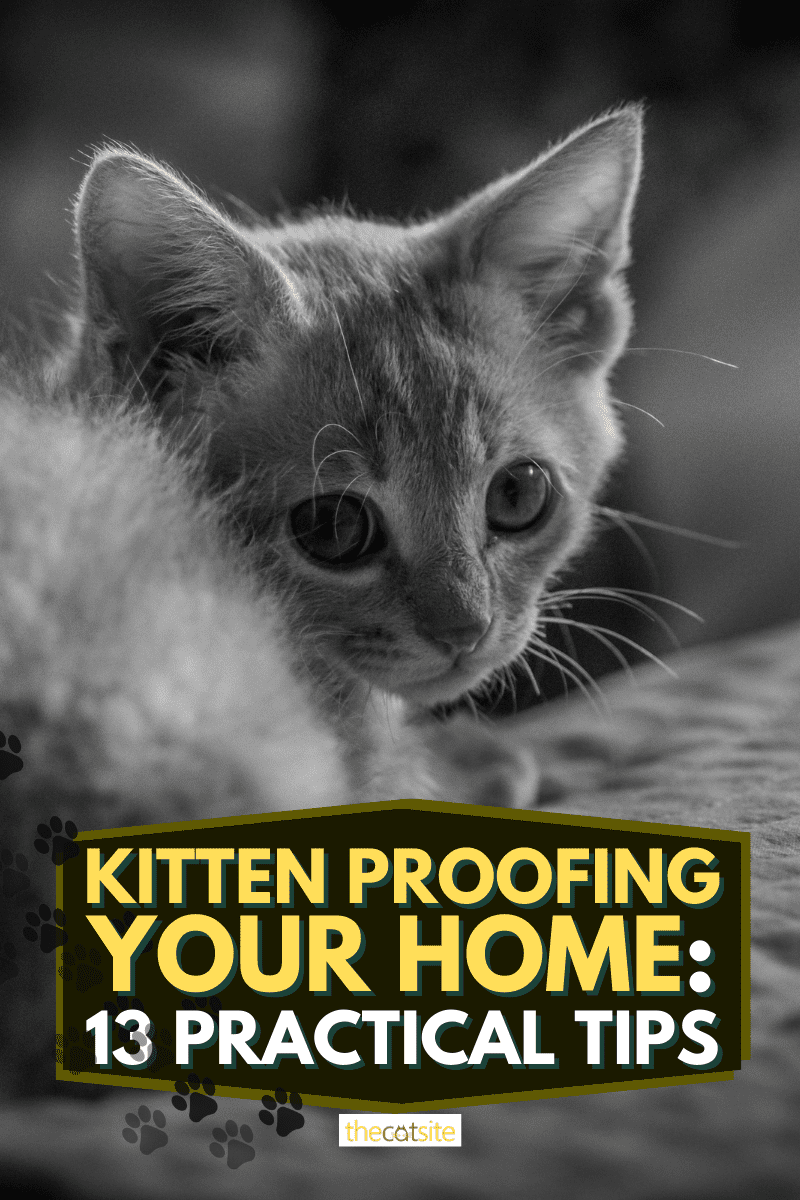
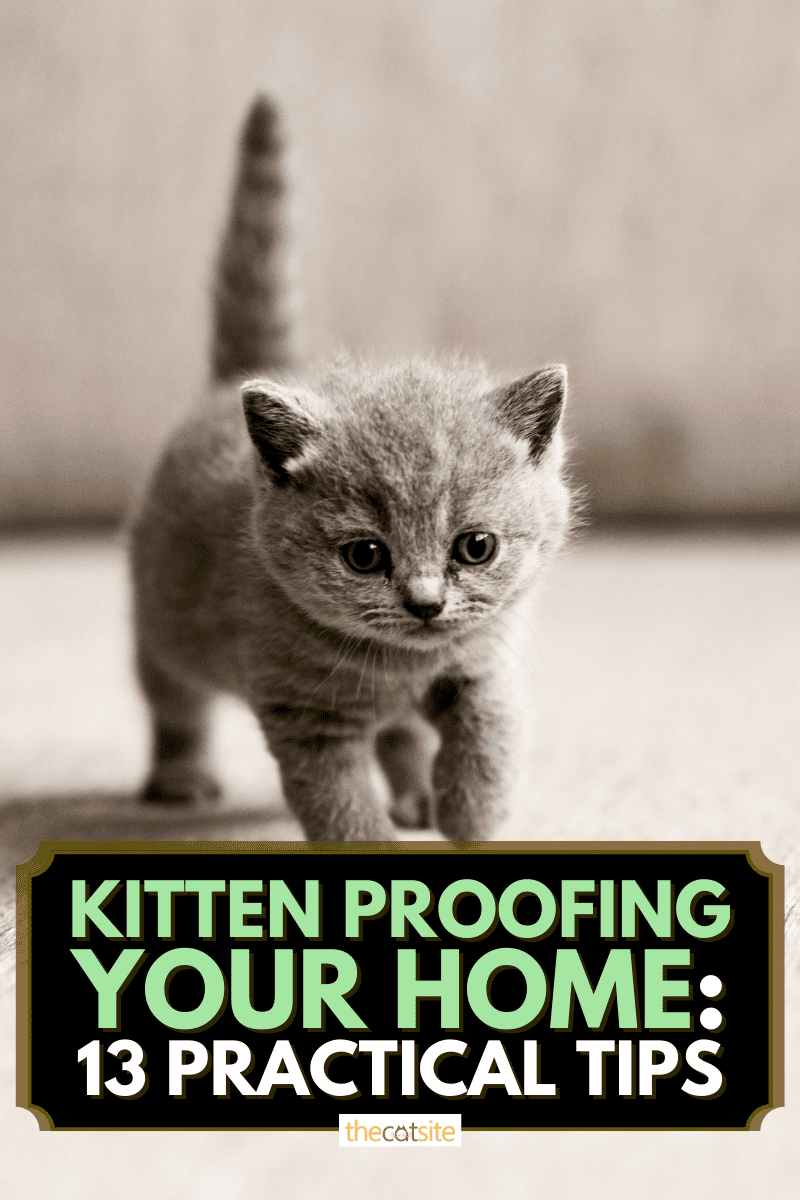
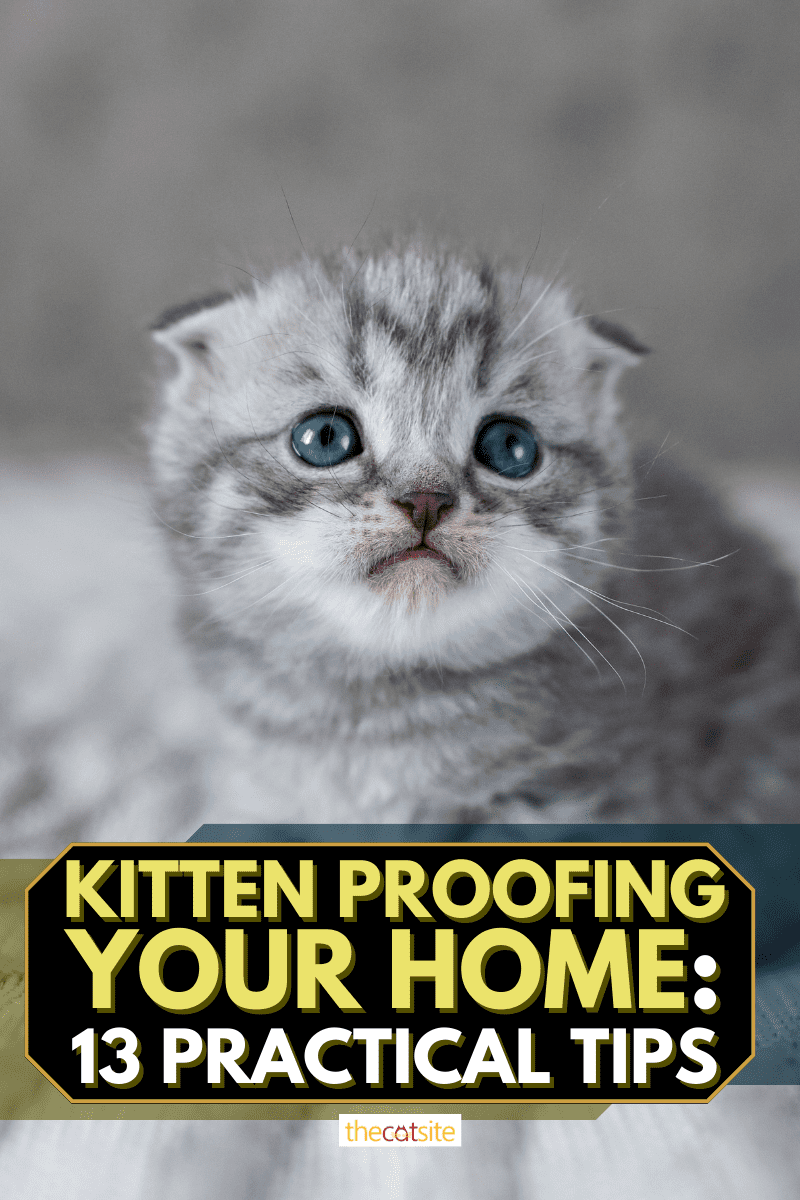
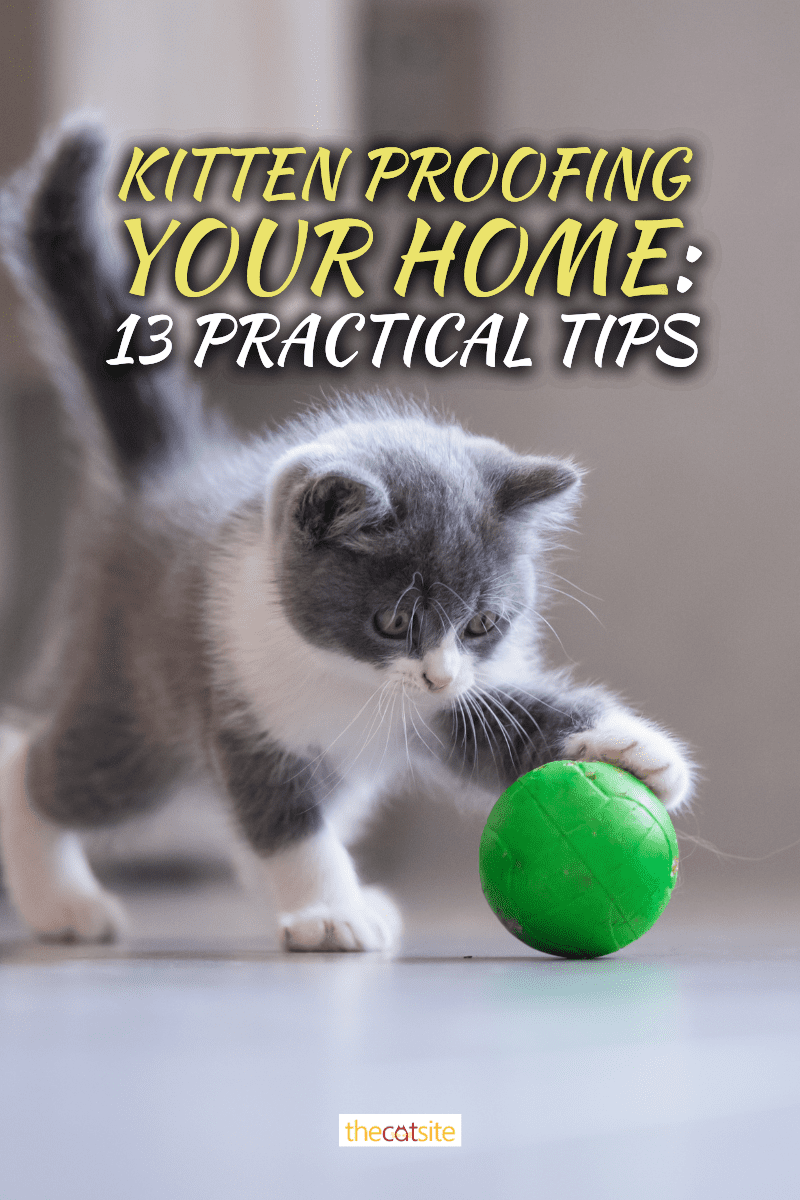



8 comments on “13 Practical Ways to Kitten-Proof Your Home”